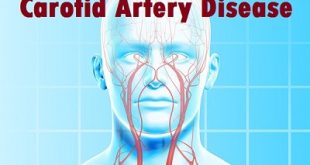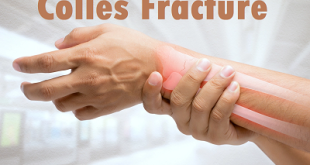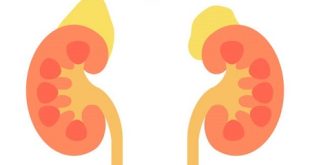Definition
A chalazion is a swollen bump on the eyelid. It happens when the eyelid’s oil gland clogs up. It may start as an internal hordeolum (stye). At first, you might not know you have a chalazion as there is little or no pain. But as it grows, your eyelid may get red, swollen, and sometimes tender to touch. If the chalazion gets large, it can press on your eye and cause blurry vision. Rarely, the whole eyelid might swell.
Chalazion in the upper eyelid
What is the difference between a stye and a chalazion?
Sometimes it can be difficult to tell the difference between a stye and a chalazion.
A stye is very painful. It often appears at the eyelid’s edge, usually caused by an infected eyelash root. It often swells, sometimes affecting the entire eyelid.
A chalazion is not usually painful. It is a bump that usually develops farther back on the eyelid than a stye. It is caused by a clogged oil gland. Rarely it makes the entire eyelid swell.
|
Chalazion vs Hordeolum (Stye) |
||
| Chalazion | Hordeolum (Stye) | |
| Symptoms | Red, painless swelling | Painful red bump with the white head on the lid margin |
| Duration | Chronic (weeks/months) | Acute (a week) |
| Common causes | Rosacea, seborrheic dermatitis | Staphylococcal infection |
| Pathology | Granulomatous inflammation | Infection (pus) |
Risk factors
Risk factors include:
- Acne rosacea
- Chronic blepharitis (inflammation of the eyelids, often from excess bacteria)
- Seborrhea
- Tuberculosis
- Viral infection
- Rarely, they may be an indication of an infection or skin cancer
Causes of chalazion
- There are tiny glands just under the inner surface of the eyelid, called meibomian glands. These make an oily fluid called meibum to help lubricate the eye.
The chalazion is a blocked gland in an eyelid
- If the gland becomes blocked then the meibum cannot escape into the tears. It may expand into a swelling (cyst) and leak into the eyelid tissue. This becomes inflamed. Over time, inflammation causes a lump (or granuloma) to form in the eyelid. This is a firm, solid lump that remains for a long time. This lump is the chalazion.
- The chalazion is more common in people who have the eye condition blepharitis, or skin conditions such as eczema because in these conditions the meibum tends to be thicker so the gland is more easily blocked. See separate leaflets called Stye and Blepharitis for more details.
Symptoms
The most common symptoms of a chalazion are:
- A tender spot on your eyelid
- A hard lump on your eyelid that you have never seen before
- Increased tearing of the eyes
- Blurred or blocked vision
- Sensitivity to light
Complications of chalazion
- Blurred vision because of irritation of the cornea or astigmatism – imperfect curvature of the eyeball
- Infection, including hordeolum (stye), pyogenic granuloma and cellulitis
- Eyelid depigmentation, disfiguration or eyelash loss
- Chalazion rupture, which can leave a scar
Diagnosis and test
A chalazion is best diagnosed by your eye doctor, who can advise you on treatment options. Necessary testing might include:
Patient history to determine symptoms and the presence of any general health problems that may be contributing to the eye problem.
External examination of the eye, including lid structure, skin texture, and eyelash appearance.
Evaluation of the lid margins, the base of the eyelashes and oil gland openings using bright light and magnification
Treatment
No treatment may be necessary as up to half of people get better without any treatment. This can take between two and six months but if the chalazion is not causing you any problems, it is probably best just to watch and wait.
Hot compresses help to ease discomfort. Hold a clean flannel that has been in hot water gently but firmly against the closed eye for 5-10 minutes, 3-4 times a day. Sometimes this warmth and slight pressure are enough to soften the contents of the fluid-filled swelling (cyst), helping it drain more easily. (The water should be hot but comfortable and not scalding.)
Antibiotic ointments, drops, and medicines are not recommended as they do not make any difference – the contents of the cyst are infection-free (sterile).
Massage of the cyst after using a hot compress can encourage the cyst to drain. Do this gently, with a clean finger or cotton bud, in the direction of the eyelashes.
Cleaning the eyelid twice per day removes grease and dead skin cells that may contribute to cysts forming. A weak solution of baby shampoo in warm water is ideal.
A small surgery is an option if it is troublesome or persistent. Your GP can refer you to an eye surgeon (ophthalmologist) for this. The operation is usually done under local anesthetic, although children and some adults may not tolerate this and may require the general anesthetic. The eyelid is numbed. A small cut is then made on the inside of the eyelid to release the contents of the cyst and it is scraped out. After surgery antibiotic drops or ointment are commonly prescribed.
Chalazion surgery
Medications
- Mild steroid drops
- For infected chalazia: oral antibiotics, such as doxycycline, minocycline or metronidazole for 10 days
- For individuals with chalazia and rosacea: oral antibiotics for 6 months
- For persistent chalazia: a steroid injection into a lesion can be effective in few weeks (possible complications: skin hypopigmentation or thinning)
- Antibiotic drops or creams are usually not used to treat non-infected chalazia.
Prevention of chalazion
- The best way to prevent the formation of this swollen bead on your eyelid is to properly remove your makeup before going to sleep. Avoid using cosmetics that haven’t been properly stored.
- Washing your face with warm water in the evening before bed is also a good practice to clear out excess oil from the face.
- Regularly checking the inside of your eyelid for any inflammation is also a good way to catch a chalazion forming before it becomes overly inflamed. This is a particularly good preventative measure for people who have had these in the past, as they are more susceptible to a gland blockage in the near future.
- It is very important to protect your eyes from an external damage, which can often be caused by your own fault. For example, don’t rub your eyes unless your fingers are cleaned, and even then, be gentle to avoid inflammation. Also, protect your eyes from dust and debris while walking on a windy day, or working in a dusty environment.
 Diseases Treatments Dictionary This is complete solution to read all diseases treatments Which covers Prevention, Causes, Symptoms, Medical Terms, Drugs, Prescription, Natural Remedies with cures and Treatments. Most of the common diseases were listed in names, split with categories.
Diseases Treatments Dictionary This is complete solution to read all diseases treatments Which covers Prevention, Causes, Symptoms, Medical Terms, Drugs, Prescription, Natural Remedies with cures and Treatments. Most of the common diseases were listed in names, split with categories.








I have benefited from this lesson,!!!!
thank you….I like this apps
and please give jaundice disease describe
sure very soon we will upload about jaundice. keep reading our app.
am satisfied with these information . but I need clear difference of stye and chalazion
please look into the post for the difference between stye and chalazion.
This app is good but please do some work on pterygium.
Sure we will upload in upcoming days. keep reading our app. Thank you.